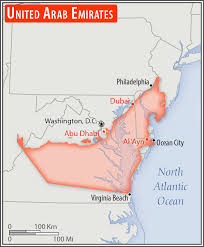UAE vs United States: Understanding Two Unique Nations

Introduction
The comparison between the United Arab Emirates (UAE) and the United States (US) is pivotal in understanding global dynamics today. Both nations are influential on the world stage, but they differ vastly in cultural, economic, and political structures. This analysis sheds light on these differences and similarities, providing a clearer picture of how each country plays a role in international affairs.
Economic Overview
The UAE has established itself as a hub for financial services, tourism, and trade. With a GDP of approximately $421 billion in 2021, the UAE’s economy is primarily driven by oil exports, tourism, and real estate. The country has diversified its economy over the past decades, focusing on sectors like technology, renewable energy, and education.
In contrast, the United States boasts the largest economy in the world, with a GDP exceeding $21 trillion. The US economy is incredibly diverse, with leading sectors including technology, finance, healthcare, and manufacturing. The US dollar serves as the dominant currency in global trade, further emphasizing its economic influence.
Cultural Differences
The cultural landscape of UAE is a rich tapestry of traditions and modern influences, shaped by its Islamic heritage. Festivals like Eid and Ramadan play significant roles in the social calendar, showcasing traditional customs and community spirit.
On the other hand, the United States is known for its cultural melting pot, where diversity reigns supreme. Each state offers a unique blend of traditions, languages, and cuisines, reflecting the nation’s immigrant roots. Major cultural events such as Thanksgiving and Independence Day showcase American values of unity and liberty.
Political Structures
The UAE operates under a monarchic system, with seven emirates governed predominantly by families ruling for generations. Political life in the UAE is characterized by a strong central authority and limited democratic participation, although recent reforms have introduced more local elections.
The United States, however, functions as a federal republic with a democratic framework, featuring a complex system of checks and balances among the branches of government. Citizens actively participate in a representative democracy, having the right to vote for their leaders and policies.
Conclusion
In conclusion, the comparison between the UAE and the United States reveals a fascinating interplay of different governance, cultural values, and economic strategies. While both nations are powerful in their own right, they cater to unique identities within a globalized world. Understanding these differences is essential for fostering international relations and economic partnerships for years to come, especially as globalization continues to shape policies and economies across borders.









